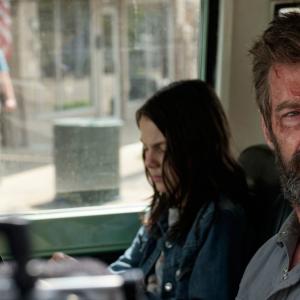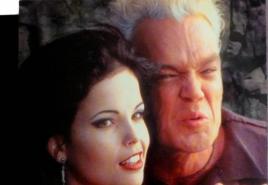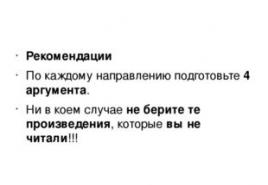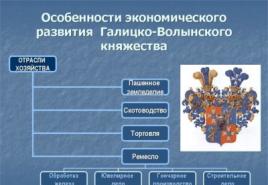Russian history on the canvases of Nikolai Ge. Peter I interrogates Tsarevich Alexei Petrovich in Peterhof
"Peter I interrogates Tsarevich Alexei in Peterhof" (1871).
Canvas, oil. 135.7 x 173 cm.
State Tretyakov Gallery
Moscow
The painting depicts the historical and family drama of the reformer Tsar Peter I. Tsarevich Alexei, the first-born of Peter I, was a man of difficult fate. This was largely due to the circumstances of his life, which did not depend on the will of the young heir. He was brought up in a boyar environment, who hated Peter for his transformations and for the harsh struggle with these same boyars, or rather, with their backward and mossy views. The tsarevich's mother, Evdokia Lopukhina, is also from a boyar family.
The character of Tsarevich Alexei was the exact opposite of his father's. In addition, he felt a strong resentment for his mother, whom Peter forcibly exiled to the Suzdal monastery. So the heir became not the successor of his father's affairs, but their enemy, moreover, a conspirator. He fled Russia, but was returned and declared a criminal.
And in this rank, he appears before a formidable father.
Who can now say what both felt at the moment depicted in the picture? This can only be guessed at. One thing is clear: a tragedy is depicted. A historical tragedy that was characteristic of all of Russia: it was hard for Peter I to break the old days and literally build a new state on blood. And he needed an assistant, the closest person - a son. But, unfortunately, he lost the heir-reformer in the person of his son. And here a personal tragedy begins: in this case, he lost his son forever, because it was impossible for an energetic father with an iron will and an insatiable thirst for activity to maintain only family relations with an ideological enemy.
In the picture of N. Ge, everything is historically authentic, up to the composition. Although one can only imagine the artist's doubts about how to correctly depict the scene, what to focus on. After all, many then were sure of the guilt of the "son-killing king", and the prince himself was declared the victim of a treacherous father. But the historian N.I. helped the artist in this matter. Kostomarov, who believed that Tsarevich Alexei acted unsightly towards his father and that his execution was a natural retribution. But the artist himself doubted that public interests could be higher than paternal feelings.
And here comes the picture. The mighty figure of the seated king is depicted with a gaze fixed on his son. A son is standing nearby - tired, with his head hopelessly bowed. A stormy explanation has already taken place, and Peter seems to be waiting for an answer from his son. He is already sure of his guilt, but it seems that still does not leave hope for his repentance. But the prince stands as if chained, looking down in confusion. Historian M.P. Pogodin claims that “in sincere, sincere letters to friends, he is what he really was, without embellishment and exaggeration, and it must be confessed that all these documents speak more in his favor than to his detriment. He was a pious man, of course, inquisitive in his own way, judicious, prudent and kind, cheerful, a hunter of revelry. Nikolai Ge, according to him, sympathized with the unfortunate fate of the prince when he painted his picture.
However, Tsarevich Alexei was not a powerless victim: he was stubborn and did not want to obey the will of his father - this has its own courage, he is an equal opponent of Peter.
This picture will always be relevant. Yes, the dispute between the heroes of the canvas is over, the passions have subsided, all the words have been said, the continuation and outcome of the case are also known to everyone. But the echo of this dispute continues to sound today - this is a dispute about the historical paths of the country and the price that the ruler has to pay for his actions.
Maxim YUDOV
Now the question of the essence of truth sounds, perhaps, even somehow old-fashioned. And as if in defiance of public taste, the Tretyakov Gallery is hosting a large-scale exhibition of Nikolai Ge, in the title of which is the name of his famous painting - “What is truth?”.
Nikolai Ge had almost the last opportunity to ask this classic question so sincerely: the 20th century lay ahead. Behind the brightly lit, smugly smiling Pilate, dressed in ancient robes, it seems that the whole power of classical culture stands, behind him is Platonic-Aristotelian philosophy and a whole pantheon of Hellenic gods, and in front of him is Christ plunged into the shadow. Someone confidently says that Jesus is turned into an ordinary person here, someone insists on the opposite. Perhaps this antinomy is what makes the image interesting. But the main thing is that the problem of rational theory and life, truth and being, almost comes to the fore in the gospel story.
This problem is deeply experienced by the artist, who endlessly corrected his work, copied it, cut it into pieces, destroying what he did not like without regret. Therefore, the rejection of his paintings by the public (Emperor Alexander III ordered the painting “What is Truth?” to be removed from the exhibition and forbade it to be transported around Russia) was unusually painful for the artist. The Tretyakov Gallery is proud of the X-ray studies of the paintings. Confirmed, in particular, the memories of Tatyana Lvovna Tolstaya, daughter of L. Tolstoy, that the painting “What is truth?” written on top of another, famous, exhibited at the exhibition of the Wanderers in 1880 and not accepted by the public - the painting "Mercy". The picture was not accepted, Ge takes it to his farm and writes it down after some time. On the same canvas, he also paints a crucifix - the details of the cross and the crowd of people are preserved in the colorful layer, but in the end he creates the plot of the meeting of Christ and Pilate. The artist paints the face of Jesus by changing the face of the girl who turned to Christ in Mercy. Light contrast gives a dramatic effect. Particular attention to light is noticeable in the historical canvas "Peter I interrogates Tsarevich Alexei Petrovich in Peterhof", which was a great success. The longer you peer into the picture, the more you feel how different the lighting of the face of Peter, in whose image one feels the power of European civilization, and the lighting of the pale face of the traitor son, as if flattened by twilight light.
In the paintings of Nikolai Ge, a person often appears, as if not fitting into the surrounding space, as if falling out of it. The artist came to this image at the very beginning, when he created his famous “Last Supper” in Italy. In Roman style, the reclining Christ and the excited apostles are opposed here by the dark figure of Judas, in a distorted, painful pose, standing at the very edge of the picture.
It is said that Ge, who often created figures from wax and clay for his paintings, painfully tried to compose them while working on The Last Supper. And one night, having come to the workshop, he put a candle between them, stepped aside, and when he turned around, he suddenly froze: the figures of the apostles and Christ were brightly lit and only Judas found himself in darkness, casting a gloomy shadow on the rest of the stage.
Contemporaries recalled with what enthusiasm Ge explained his work. And now, speaking of Nikolai Ge, they like to emphasize some speculative nature of his work. And at the same time, he was one of the first to follow the path of transformation of the classical form, the first to feel the approach of the Silver Age.
Museums section publications
Russian history on the canvases of Nikolai Ge
The painter Nikolai Ge became famous for his religious paintings, but his brush also includes works on historical subjects. Peter I and Tsarevich Alexei, the future Empress Catherine II and her husband Peter III, Alexander Pushkin and the Decembrist Ivan Pushchin - we recall the famous paintings of Nikolai Ge.
"Peter I interrogates Tsarevich Alexei"
Nicholas Ge. Peter I interrogates Tsarevich Alexei in Peterhof.1871. State Tretyakov Gallery

Monplaisir Palace. Photo: State Museum-Reserve "Peterhof"

Picture from the exhibition of the State Tretyakov Gallery: Nikolai Ge. Peter I interrogates Tsarevich Alexei in Peterhof. 1871
The son of Peter I and his first wife Evdokia Lopukhina, Tsarevich Alexei did not get along well with his father. Peter reproached him for his inattention to state affairs, for his kindness to his mother, who was imprisoned in a monastery, and for many other things. When the second wife, Ekaterina Alekseevna, gave birth to another son to Peter, Alexei's position became more painful. He fled abroad in search of allies. A year and a half later, the prince returned, but for his flight he was deprived of the right to succession to the throne in favor of his younger brother. And soon the Secret Office began an investigation into the case of Alexei - he was suspected of wanting to seize power. The prince was interrogated by Peter I.
It was this episode that became the plot of the painting by Nikolai Ge. Before starting work, Ge visited the Peterhof Monplaisir Palace, where the prince was interrogated, and sketched the interior and many details of the decoration. The restrained atmosphere depicted on the canvas corresponds to the gloomy mood of the scene. There are only two heroes in the picture, and both of them are in the center of the plot. No external effects, no luxury, no attributes of royal power. Only an angry king-father and a traitor son who does not dare to raise his eyes to him.
“Peter the Great is not stretched to his full height, he does not rush, does not shake his arms, does not sparkle with his eyes, Tsarevich Alexei does not kneel, his face contorted with horror ... and yet the viewer feels like a witness to one of those amazing dramas that are never erased from memory."
Mikhail Saltykov-Shchedrin
"Catherine II at the coffin of Empress Elizabeth I"

Nicholas Ge. Catherine II at the coffin of Empress Elizabeth. 1874. State Tretyakov Gallery

Nicholas Ge. Catherine II at the coffin of Empress Elizabeth. Sketch. 1871

Nicholas Ge. Catherine II at the coffin of Empress Elizabeth. Sketch. 1873
The name of the canvas is not entirely correct: at the moment depicted in the picture, its main character had not yet become Empress-Autocrat Catherine II, but was only the wife of Peter III Alekseevich. After the death of Elizabeth Petrovna, relations between the spouses escalated. The new emperor did not hide that he was going to get rid of his objectionable wife, while Catherine hatched plans for her own salvation.
The scene at the tomb of Elizabeth was remembered by many contemporaries. According to the memoirs of one of the courtiers, “the emperor had no desire to participate in the ceremonies necessary for the funeral of the late empress, his aunt, and left this care to his wife, who disposed of it in the best possible way, possessing quite political tact”. The subjects were offended by the fun and negligence of Peter and highly appreciated with what reverence for the memory of the Empress Catherine stood for long church services and prayed.
The artist carefully studied the notes of Catherine II, the memoirs of her friend, the conspirator Ekaterina Dashkova, and other evidence of those events. Among them was a portrait of the Empress in mourning - it was painted in 1762 by Vigilius Eriksen. A curious detail: in the portrait of Eriksen, Catherine's sash is blue, the order of St. Andrew the First-Called. Only the autocrat could wear it, therefore, the portrait was painted after the coup and the overthrow of Peter III. And in the picture, the mourning dress is the same, but the ribbon, as expected, is red - the order of St. Catherine. He was favored by the spouses of emperors. The “Imperial” blue ribbon can be seen on Peter III. His figure stands out in the background with a white camisole inappropriate for a funeral. Dashkova described that the emperor came to the coffin not to mourn his aunt, but "to joke with the ladies on duty, ridicule the clergy, and find fault with the officers about their buckles, ties or uniforms".
Among other characters in the canvas, one can recognize Ekaterina Dashkova and other conspirators - Kirill Razumovsky and Nikita Panin. An elderly courtier, following Peter, but turning around after Catherine, is Nikita Trubetskoy. During the coup, Trubetskoy will go over to her side.
“The picture is not the word. She gives one minute, and in this minute everything should be, but no - there is no picture.
Nikolai Ge
"Pushkin in the village of Mikhailovsky"

V. Berne. Portrait of Ivan Pushchin. 1817. All-Russian Museum of A.S. Pushkin

Nicholas Ge. A.S. Pushkin in the village of Mikhailovsky. 1875. Kharkov Art Museum

Unknown artist. Portrait of Arina Rodionovna. 1st thurs. 19th century All-Russian Museum of A. S. Pushkin
The painting by Nikolai Ge “Pushkin in the village of Mikhailovsky” is known to many: it was often printed in textbooks. In the center of the plot is a visit to the exiled Pushkin by his lyceum friend Ivan Pushchin. However, drama is also captured here - the drama of true friendship. It was dangerous to visit the disgraced poet in exile, and his uncle Vasily Pushkin dissuaded Pushchin from going. However, that one, a member of a secret society, in January 1825 was not afraid to come to Mikhailovskoye. Alexander Pushkin later wrote of the meeting:
My first friend, my priceless friend!
And I blessed fate
When my yard is secluded
covered in sad snow,
Your bell has rung.
For the sake of artistic effect, Ge, usually attentive to detail, deviated slightly from historical truth when he painted the interior. According to Ekaterina Fok, who visited the poet's house more than once in her childhood: “Ge wrote on his painting “Pushkin in the village of Mikhailovsky” the cabinet is completely wrong. This is not the office of Alexander Sergeevich, but of his son, Grigory Alexandrovich.. From the further description it is clear why the real poet's office was not suitable for a large-scale canvas: “Alexander Sergeevich’s room was small, miserable. There was only a simple wooden bed in it with two pillows, one leather, and a dressing gown was lying on it, and the table was cardstock, peeled: he wrote on it, and not from an inkwell, but from a fondant jar..
Depicted on the canvas, Alexander Pushkin reads aloud to a friend - most likely, Alexander Griboyedov's comedy "Woe from Wit". It was Pushchin who brought him a list of a fashionable play. She led the poet into such delight that he recited standing up. In the background is the nurse Arina Rodionovna, who broke away from knitting to listen to the pupil.
Ivan Pushchin recalled a short visit to Mikhailovskoye: “We still clinked glasses, but we drank sadly: as if we felt that we were drinking together for the last time, and drinking for eternal separation!” The visit did not last long, but Pushchin managed to tell his friend about the secret society and his plans. In December of the same year, he went to Senate Square, after which he was convicted and sentenced to 25 years in hard labor. The friends never saw each other again.
The painting was painted by Ge for the 1st exhibition (“Wanderers”), the opening of which took place in St. Petersburg in November 1871. In particular, the relevance of the theme chosen by the artist was associated with the approaching 200th anniversary of Peter I (1672-1725) at that time. Even before the exhibition, the painting was bought from the author by Pavel Tretyakov.
Nikolai Ge painted several author's repetitions of the painting, one of which was acquired by Alexander II - it currently belongs to the collection of the State Russian Museum.
By the beginning of 1870, Nikolai Ge returned to Russia from Italy, where he lived and worked in 1857-1863 and 1864-1869. The final move took place in May 1870, when he and his family settled on Vasilievsky Island in Saint Petersburg. During this period, Ge became close to progressive artists and writers, and became one of the founders of the Association of Traveling Art Exhibitions (TPKhV). Plots connected with the Russian history of the 18th-19th centuries began to appear in his work. One of the first works on this topic was the painting “Peter I and Tsarevich Alexei” - the plot associated with Peter I was relevant in connection with the approaching 200th anniversary of his birth.
As Ge worked on the picture, he studied historical documents related to the activities of Peter I. Apparently, he discussed them with his friends and acquaintances - in particular, with the historian and publicist Nikolai Kostomarov. As a result, the initial idealization of the personality of Peter I was replaced by a more realistic assessment associated with an understanding of the cruelty and suffering that paid for the success of the transformations of the Petrine era. Nikolai Ge himself described this situation as follows:
Nikolai Ge was preparing the painting “Peter I interrogates Tsarevich Alexei Petrovich in Peterhof” for the 1st exhibition of the Association of Traveling Art Exhibitions (“Wanderers”), the opening of which was postponed several times, but eventually took place in St. Petersburg in November 1871. Pavel Tretyakov bought the painting directly from the artist's studio, shortly before the start of the exhibition - this canvas was the first painting by Ge acquired by Tretyakov for his collection.
During the exhibition, Emperor Alexander II liked the painting, who also expressed a desire to buy it - while no one dared to inform him that the painting had already been sold. To solve this problem, Ge was asked to write an author's copy for Tretyakov, and give the original to Alexander II. However, the artist stated that he would not do this without the consent of Pavel Mikhailovich, and as a result, the original was given to Tretyakov, and the author's repetition was written for Alexander II, which later passed into the collection of the Russian Museum.
Despite the outward calmness of Peter I and Tsarevich Alexei, their inner state is full of experiences and emotional tension. Apparently, a heated discussion took place between them, as a result of which Peter I was even more convinced of the betrayal of his son, which is confirmed by the documents laid out on the table (one of the papers fell to the floor). Before pronouncing the verdict, Peter I peers into the face of his son, still hoping to see signs of repentance on him. Alexei, under the gaze of his father, lowered his eyes - confident that Peter I would not dare to sentence his own son to death, he is silent and does not ask for forgiveness.
The light and shade solution of the composition emphasizes the difference between the characters. According to art critic Tatyana Karpova, the figure of Tsarevich Alexei is illuminated with a paler, “like a moonlight, dead light”, which in this situation symbolizes that “he already belongs more to the kingdom of shadows than to real life with its passions and colors.” At the same time, the face of Peter I, on the contrary, is "vigorously molded with contrasting chiaroscuro". The corner of the table and the red-black tablecloth hanging from it (“colors of mourning”), as it were, separate father and son and portend the tragic denouement of this drama. The alternation of black and white floor tiles has several interpretations - “both an expression of the spirit of regularity of the Petrine era, and black and white in the characters of Peter and the prince, and a chessboard on which the final game played by Alexei is played out.”
There is no evidence in historical documents that Peter I ever interrogated Tsarevich Alexei in the Monplaisir Palace, which had not yet been fully completed by 1718 - on the contrary, there are allegations that “in reality this did not happen in Monplaisir”. It is also believed that it is unlikely that Peter I interrogated the prince one on one. Although Ge apparently knew about this, nevertheless, he made the decision to depict only Peter and Alexei in the picture in order to be able to focus on the psychology of their experiences.
The moment of the painful search for a solution depicted in the picture indicates that Ge wanted to show in Peter I not an executioner, but a father stepping over his personal passions for the sake of the interests of the state. Art historian Alla Vereshchagina noted that “for the first time in Russian historical painting, typical images of real historical figures, alien to idealization, were created,” since “psychologism determined the true historicism of the work.”
The Tretyakov Gallery also contains a sketch of the same name (1870, oil on canvas, 22 × 26.7 cm, Zh-593), which was purchased from the heirs in 1970.
There are several full-length author's repetitions of the same name. One of them is in the State Russian Museum (1872, oil on canvas, 134.5 × 173 cm, Zh-4142), where it arrived in 1897 from the Hermitage. Another repetition, also dated 1872, is in the State Museum of Arts of Uzbekistan in Tashkent. It came there from the collection of Grand Duke Nikolai Konstantinovich (according to some reports, this painting was previously in the collection of his father, the Grand Duke ", Writer and critic Mikhail Saltykov-Shchedrin paid great attention to the painting by Ge. In particular, he wrote:
The painting "Peter I interrogates Tsarevich Alexei in Peterhof" on a Russian postage stamp in 2006
Noticing that, "apparently, the personality of Peter is extremely sympathetic to Mr. Ge", Saltykov-Shchedrin, for his part, highly appreciates the role of Peter I in Russian history and his moral qualities. He positively assesses Peter's reforms, believing that the subsequent failures of some of them occurred not through the fault of Peter, "but because the successors of his work supported only the letter of the reforms and completely forgot their reason." Therefore, in the conflict depicted in the picture, Saltykov-Shchedrin's sympathy is completely on the side of Peter, who feared that Tsarevich Alexei, having ascended the throne as his heir, would destroy much of what he had created. According to Saltykov-Shchedrin, “Peter’s figure seems to be full of that luminous beauty that only an undoubtedly beautiful inner world gives a person,” while for Tsarevich Alexei, a meeting with his father was also “full of moral anxieties, but these anxieties of a different, undoubtedly base properties" .
An article about the 1st traveling exhibition was also published by art critic Vladimir Stasov, who also considered Ge's painting as one of the best works presented. In particular, he wrote:
At the same time, unlike Saltykov-Shchedrin, Stasov was more critical of the personality of Peter I, considering him a tyrant and despot, and Tsarevich Alexei a victim, and it was from this point of view that he criticized the composition of the painting Ge.
An art historian who studied Ge’s work wrote that this painting is “one of the most striking evidence of the convergence of Ge’s art with the art of his fellow Wanderers,” since when assessing historical figures, “he is primarily interested in the internal, psychological motives of actions,” and he is “led by the need to evaluate people and events in their moral sense"
The failure of the latest religious paintings forced Ge to abandon this topic for a while. He again turned to history, this time Russian, dear and close to his soul.
At the First Traveling Exhibition Ge showed his new work "Peter I Interrogates Tsarevich Alexei Petrovich in Peterhof". The artist offered a psychological interpretation of the plot, presenting the canvas as a drama of a clash of personalities - adherents of opposing life values.
Tsarevich Alexei was well educated, knew several foreign languages, and, in fact, he did not oppose the reforms in any way, but he was disgusted by the despotic and harsh forts of the reign of Peter I.
Until now, it is not clear whether he actually initiated the preparations for the seizure of power in Russia, or whether he became an unwitting hostage of his entourage, dissatisfied with the policy of the monarch. The prince fled to the West, from where he was returned and tortured to death by torture in the Peter and Paul Fortress with the knowledge and on the orders of his own father.
In a historical canvas, the painter conveys the internal state of the characters. The ostentatious calmness of both, without gestures and external effects, is deceptive. This is a drama of experiences, a drama of mental anguish and difficult choices.
Ge very accurately chose the moment that he reflected in his picture. After studying the documents and a heated argument, Peter is no longer angry, but bitterly assures himself of his son's betrayal. But before signing the verdict, he peers into Alexei's face, still not losing hope of seeing repentance in him. The prince lowered his eyes under the gaze of his father, but the silent dialogue continues. The hanging edge of the blood-colored tablecloth is symbolic: it not only separates the characters, but seems to herald the tragic resolution of this conflict.
The European atmosphere of the hall in Monplaisir is alien to the prince, who grew up in towers, and plays against him. But Alexei, confident that the emperor would not dare to raise society against himself and would not be able to step over his father's feelings, stubbornly remains silent. He remains Peter's opponent to the end.
The artist mainly wanted to convey to the viewer that the death sentence was signed not by a crowned executioner, but by a parent wounded in the heart, who made a decision in the interests of the state.
This picture is cold. Dark walls and a cold mouth of a fireplace, a stone floor, a pale cold light, barely dispelling the twilight of a large hall. But the main coldness is in the relationship between father and son, who have become irreconcilable opponents. The floor, drawn into black and white squares, resembles a chessboard, and the real characters on it are like two opposing pieces in a historical chess game.
In this tragic collision, the most important problem for the artist was the problem of the moral dignity of the individual. In 1892, he wrote in his Notes: “Ten years spent in Italy had an impact on me, and I returned from there a perfect Italian, seeing everything in Russia in a new light. I felt in everything and everywhere the influence and trace of the Petrine reform. This feeling was so strong that I was involuntarily carried away by Peter ... It is hard to paint historical pictures ... You have to do a lot of research, because people in their social struggle are far from ideal. During the painting of the painting "Peter I and Tsarevich Alexei" I had sympathy for Peter, but then, having studied many documents, I saw that there could be no sympathy. I inflated my sympathy for Peter, saying that his public interests were higher than his father’s feelings, and this justified his cruelty, but killed the ideal ... ”.
The painting was received with great interest. Worldview disputes flared up around her, to some extent they have not subsided so far. The canvas was immediately acquired by Pavel Mikhailovich Tretyakov, and now it is rightfully considered one of the most famous Russian historical works mentioned in textbooks and school anthologies.







